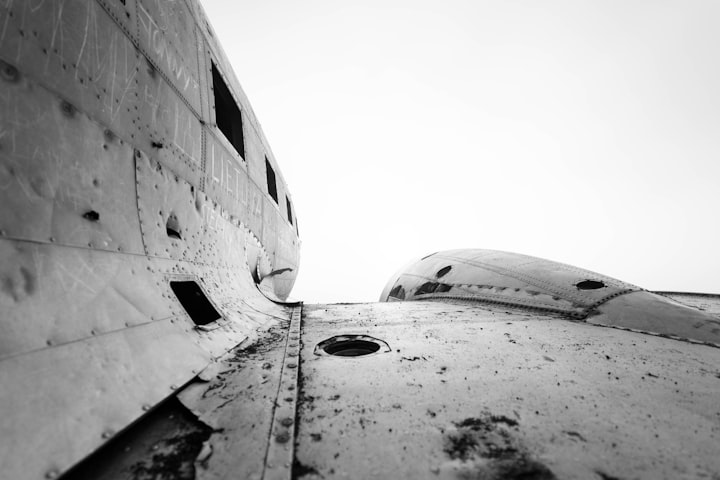The Shocking Story Of The Disaster area Of The Essex
A whale intensely. A shocking wreck. Men battling for endurance for quite a long time in the untamed sea.

It seems like the plot for a blockbuster film, or a piece of well known writing, however unquestionably excessively incredible for reality. In any case, on November twentieth, 1820, the whaling transport Essex ran over an irate whale, and 20 men ended up living this precise bad dream.
Blasting Interest FOR WHALE OIL
While whaling has been rehearsed for millennia, it arrived at its top during the 1800s as a blasting extravagant industry. Expanded interest for whale oil to fuel lights and grease up new modern machines pushed the business to a worldwide scale.
Almost a century sooner during the 1700s, a significant part of the Atlantic had previously been overfished and whales were difficult to find. Looking for another region to stay aware of expanding request, nineteenth century whalers turned their sights to the somewhat undiscovered Pacific Sea, expecting more prolific whaling grounds.
Whaling was a troublesome and risky work. Enormous whaling boats would wander many miles from shore, then convey more modest whaleboats to chase whale units. These whaleboats, frequently something like 20 feet long, could hold a couple of crew members who might push out after the whales and spear them, prior to hauling them back to the boat for gathering. Frequently, these whales were about the size of the boats, and ready to set up a battle.
THE "Fortunate" Boat Heads out
On August 12, 1819, the whaling transport Essex set forth from the little New Britain island of Nantucket, bound for a more than long term journey toward the South Pacific. Her group comprised of 28-year-old Commander George Pollard Jr, 23-year-old first mate Owen Pursue, 26-year-old second mate Matthew Happiness and a team of 18 men.
Youthful Skipper Pollard had been effective such a long ways in his profession and immediately rose through the positions, becoming one of the most youthful whaling transport chiefs at that point. The 87-foot-long, 238-ton Essex was around 20 years of age and had been on numerous effective excursions previously. Some even viewed as her "fortunate".
Regardless of the proficient team and trustworthy boat, the doomed endeavor promptly ran into inconvenience. On August 14, just two days out of port, the Essex almost sank in a tempest. Experiencing minor harm, the team fixed her up and proceeded with their journey south to Cape Horn.
After arriving at the Pacific bank of South America, the group tracked down couple of whales to chase. Bits of hearsay from different whalers recounted fruitful new ground a long way from shore, around 2,000 miles west of Ecuador. While the team was reluctant to go such a long ways into unchartered waters, they at last chose to branch out.
Disasters IN THE GALAPAGOS
The Essex halted at Charles Island, a little island in the Galapagos archipelago, to restock. A typical practice at the time was for mariners to gather Galapagos turtles to bring installed, which could be utilized as simple food sources as boats got further from land. The Essex team gathered an expected 60 turtles weighing around 100 pounds each.
While on Charles Island, a crewmember later distinguished to be helmsman Thomas Chapple, lit a fire on the island. Purportedly, it was a mishap or a trick that turned out badly, however no matter what the reason, the result was disastrous. The flares immediately grabbed hold of the dry island and outgrew control.
The team scarcely got away with their lives, yet the island's greenery were less lucky. Years after the fact, Charles Island was accounted for to in any case be a no man's land. This fire is thought to be the reason for the eradication of both the Floreana Turtle and the Floreana Mockingbird.
The angry Chief Pollard swore retaliation on the offender, yet obviously, nobody ventured forward to accept their discipline.
A WHALE WITH A Feud
After arriving at the supposedly prolific hunting ground they were recounted, the group started looking for whales. At first, few were found, however soon, similarly as they were informed there would be, pods of whales started showing up.
On November twentieth, 1820, an enormous case of sperm whales was experienced. The commander and group conveyed each of the four whaling boats and hurried out in pursuit. Before long into the chase, a whale surfaced right underneath First Mate Owen Pursue's boat, harming the little whaleboat and compelling him to get back to the Essex for fixes. Little whaleboats being harmed by whales was normal, and the three different boats proceeded with their chase.
While fixing his boat, Pursue ended up seeing a huge male whale off somewhere out there. He assessed it to be around 85 feet in length and weigh around 80 tons. What was odd was not its huge size, but rather the way that it was discrete from the remainder of the crowd, and appeared to be standing by, confronting straightforwardly toward the Essex.
Unexpectedly, the whale blew a colossal crest of water from its spout and started charging ideal for the Essex. Pursue assessed that it was going at two times a whale's typical speed. With brief period to prepare themselves, the group was surprised and almost pushed over by the power of the effect. The whale then vanished underneath the boat.
The team hurried to examine the harm, a sizeable opening in the structure, and immediately started fixes and siphoning the approaching seawater.
Out of nowhere, somebody hollered, "he is right here — he is making for us once more!"
Pursue immediately turned around to find the whale surging the boat once more, quicker this time, prior to hammering the boat with much more noteworthy power. This time, it vanished forever.
With this subsequent strike, the Essex started shifting to its side and quickly leaking water. The group raced to accumulate whatever number supplies as could be expected under the circumstances and burden them into the bringing whaleboats back.
Chief Pollard hurried back to his boat and cried, "My God, Mr. Pursue, what is wrong?"
Pursue could answer, "We have been oven by a whale".
INTO THE WHALEBOATS
The 20 men packed into three whaleboats, one drove by Chief Pollard, one drove by First Mate Pursue, and the third by Second Mate Matthew Delight. Each boat held 6 or 7 men and a generally even dissemination of provisions.
Utilizing the route hardware, Skipper Pollard assessed that the nearest land they would find was the Polynesian Marquesas Islands, around 1,200 to 1,500 miles west. The team was reluctant.
Bits of gossip about barbarians in the Polynesian Islands terrified them, and they contended that their most obvious opportunity for endurance was to travel southeast to South America. This was in excess of 2,000 miles away and they would be conflicting with the breeze and flows, yet the team persuaded the Chief to take this course.
Supplies were proportioned out: around 6 ounces of bread and 8 ounces of water each day per man. The bread immediately became soaked with seawater in the cracked boats, however the men ate them at any rate, just demolishing their parchedness.
Getting through in the whaleboats was what was happening for the group. Open to the components, the men confronted the rankling beams of the sun, the slippery sea flows, and perils they couldn't expect. One day Commander Pollard's boat was even gone after by an orca.
On December twentieth, a month after the Essex sunk, they happened upon Henderson Island, a little and uninhabited island in the chain of Pitcairn Islands in the South Pacific Sea. While at first excited to find land, it immediately became obvious to the group that the island was for the most part fruitless. They discovered some new water and had the option to eat fish and bird eggs, yet realized this wouldn't stand the test of time.
Following seven days, the group restocked the whaleboats and were prepared to proceed. Three men, Thomas Chapple, Seth Weeks, and William Wright, concluded they'd prefer take their risks ashore and remained behind. The remainder of the team certainly wouldn't fret having less men to impart apportions to.
When all else fails, compromise is unavoidable
Toward the beginning of January 1821, Second Mate Delight died. The group covered him adrift, which youthful lodge kid Thomas Nickerson later reviewed that they did as such "as nicely as our pathetic conditions would concede to".
A couple of days after the fact, another man passed however was less lucky in the treatment of his remaining parts. At this point, apportions were practically gone, and with no different assets, the team selected to eat what they could of the body. Prior to covering him adrift, they cut off what they could and simmered the tissue and organs on a stone.
In the following week, three additional men met a similar destiny.
One evening, the men guiding Second Mate Euphoria's boat vanished into the haziness, and before long, Pursue and Pollard's boats were isolated also.
On Pollard's boat, 4 men remained. On February sixth, one youthful crewmember, Charles Ramsdell, suggested that the survivors draw parts, and the washout be forfeited for food. In these frantic conditions, the men concurred.
Skipper Pollard's young cousin, 16-year-old Owen Final resting place, eventually lost the draw.
Pollard had guaranteed his auntie that he'd deal with the kid, and expected to keep that commitment. He swore he'd kill any man that contacted him, and, surprisingly, proposed to have his spot on the off chance that he could have done without the part he drew. Casket answered that his parcel was fair and that he preferred it "as well as some other" man.
The men again attracted parts to figure out who might kill Casket. Ramsdell, who was dear companions with Casket, was tragically picked. He put his firearm to his companion's head and delayed for quite a while before at long last pulling the trigger.
A Finish TO THEIR Experience
On Pursue's boat, 3 men remained. On February eighteenth, 1821, following 90 days of battling to get by, they saw a boat's sail somewhere out there. Marshaling what strength they had left, the men paddled after the English vendor transport the Indian and were safeguarded.
after 5 days, on February 23rd, around 300 miles south of where Pursue's boat was safeguarded, the American whaling transport the Dauphin happened upon a solitary whaleboat. After looking into it further, they found two men inside, Pollard and Ramsdell, dazed and frantically getting a handle on the bones of their last buddy.
After being brought on board, Pollard recounted the tale of their frightening experience to the Dauphin's commander, On April 9th, 141 days after the sinking of the Essex, the crew of the Australian ship the Surrey was passing by Henderson Island. To their surprise, they saw three men living on what was supposed to be an uninhabited island. These men were none other than Thomas Chapple, Seth Weeks, and William Wright, who had survived the past several months on shellfish and eggs.
It wouldn’t be until several years later that Joy’s boat was found, washed ashore on Ducie Island in the Pitcairn Islands. The skeletons of its crew confirmed that there were no survivors.
In all, 8 members of the Essex’s crew of 20 survived: Captain Pollard, First Mate Chase, cabin boy Thomas Nickerson, and crew members Benjamin Lawrence, Charles Ramsdell, Thomas Chapple, Seth Weeks, and William Wright.
SURVIVORS RETURN TO SOCIETY
News of their ordeal quickly spread as the incredible story was told and retold. The rest of the sea-faring community did not judge the survivors for cannibalism. It was an unspoken but understood custom that sailors lost at sea may need to do unthinkable things to survive.
Captain Pollard, however, was judged more severely than the rest of his crew, only for having eaten his cousin. It was said that Coffin’s mother refused to be in Pollard’s presence after the incident.
Shockingly, many of the survivors chose to continue their maritime careers, sailing or captaining other ships for years after the loss of the Essex. Soon after, Pollard went on to captain another whaling ship, Two Brothers, which sunk on a coral reef northwest of Hawaii. This was the nail in the coffin for his career.
Considered unlucky now, no one would hire him and he resorted to working as a watchman on land in Nantucket.
The survivors never forgot their time lost at sea after the sinking of the Essex. Thomas Nickerson went on to publish his account of the ordeal. Chase reportedly became insane later in life, before passing away nearly 50 years later.
It was said that on November 20th of each year, Captain Pollard would lock himself in his room and fast in remembrance of his crew.
LEGACY OF THE ESSEX
For more than 200 years, the unbelievable story of the sinking of the Essex has captured the imagination. A ship wrecked by a vengeful whale sounds more like a work of fiction than real life.
Oddly enough, one novel inspired by the sinking of the Essex has grown in popularity, becoming one of the most famous pieces of literature from the 19th century. While many may not have heard of the whaleship Essex, its legacy is cemented for future generations in Herman Melville’s famous 1851 novel, “Moby-Dick; or, The Whale”.






Comments
There are no comments for this story
Be the first to respond and start the conversation.